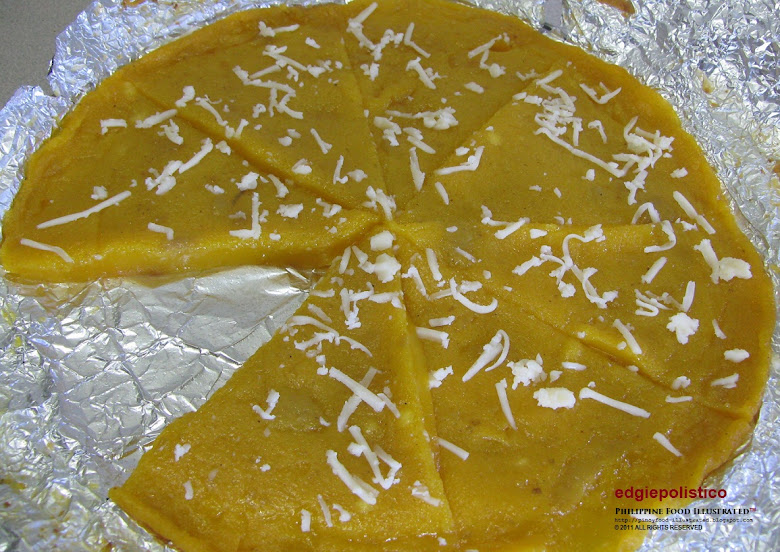igado – /i-ga-dó/ (Ilocano dish) [n.] braised strips of meat, liver, and other internal organs.
Other local names:
Ragout of atay ng baboy (pig’s liver), the liver is cut into strips and marinated in vinegar for a while. Other ingredients include some thin strips of sliced pork, sliced pig’s kidney, heart, lapay & isaw (intestine), strips of kamote (sweet potatoes) or patatas (potato), and thick strips of ginger. Cooking starts with sautéing of chopped onions and garlic (if there are pork fats, fry it first then use the lard in sautéing), then all ingredients, except the liver are added into the pan.
Other local names:
- a.k.a higado or dinaldalem in Ilocano
Ragout of atay ng baboy (pig’s liver), the liver is cut into strips and marinated in vinegar for a while. Other ingredients include some thin strips of sliced pork, sliced pig’s kidney, heart, lapay & isaw (intestine), strips of kamote (sweet potatoes) or patatas (potato), and thick strips of ginger. Cooking starts with sautéing of chopped onions and garlic (if there are pork fats, fry it first then use the lard in sautéing), then all ingredients, except the liver are added into the pan.
When the color of the ingredients turns opaque, it is a sign that the stuff is heated well. Toyo (soy sauce) is then added with some vinegar, peppercorn, bay leaf, and garbanzos (chickpeas). If the soup dries out while simmering, A cup or two of water is added to continue simmering until the meat is tender.
When meat is tender, the liver is added followed by some pieces of siling haba (finger chili). Salt and pepper may be added to adjust the taste.
The liver is the last ingredient to be cooked into the pan as it easily hardens when cooked, the longer it is heated the tougher it becomes.
To add a complimenting colorful garnishment, add pre-cooked green peas and sliced carrots when cooking is about to finish.
To add a complimenting colorful garnishment, add pre-cooked green peas and sliced carrots when cooking is about to finish.
All photos by Edgie Polistico in this blog are copyrighted. ALL RIGHTS RESERVED.
If you liked this post and our site, share it.
Let us know your opinion on the subject. Feel free to comment in the comment section, below. It is important for us to know what you think.
Tell us what other topics you would like us to write, share, and discuss about.
For more about Filipino food, see this Philippine Food, Cooking, and Dining Dictionary. It is OPEN and FREE.
Continue to follow my blogs. You can also follow and learn more by joining us in our Facebook group. Have more bits and pieces about our kind of food, ingredients, and ways of cooking, dining, and knowing food culture across the 7,641 islands of the Philippines.
Encouragement and enthusiasm are not enough. I also need moral support, prayers, and anything else that can uplift my spirit and keep my good reasons. Keep them coming. All I know is that I am happy with what I am sharing and giving away. If you are pleased and happy with what I am doing, just smile and please share the happiness. Keep sharing and include to share the PHILIPPINE FOOD ILLUSTRATED. I feel energized when my blog becomes one of the reasons why you are happy and smiling.
Edgie Polistico
a.jpg)
.jpg)








%252Bin%252BBinalonan%252C%252BPangasinan%252B(1).jpg&container=blogger&gadget=a&rewriteMime=image%2F*)
%252Bin%252BBinalonan%252C%252BPangasinan%252B(2).jpg&container=blogger&gadget=a&rewriteMime=image%2F*)

.jpg)






